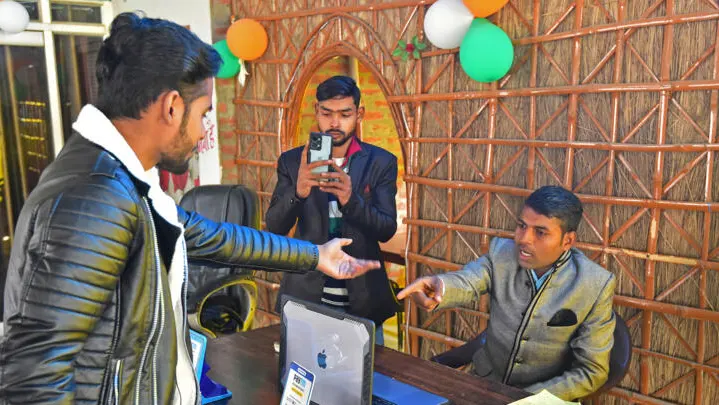The acting is dire and the scenarios fake, but staged videos are peddling disinformation and fanning sectarian tensions in India, which has seen rising Hindu radicalisation under nationalist Prime Minister Narendra Modi.
One such five-minute film purported to show a Muslim man mixing toilet cleaning liquid into a street snack, before being “confronted” by passersby. The video got more than five million views on Facebook.
Another, seen more than 3.5 million times on You-Tube, depicts a fruit-seller — a trade taken up by many Muslims — cheating customers out of pome-granates before being accosted and assaulted.
“Before buying anything from Muslim Jihadis, watch this video of a Muslim fruit seller,” the ac-companying caption says.
Asked about the impact their work may have, the video-makers say the clips are just meant as “enter-tainment” — and to make money.
The toilet cleaning liquid video was made by Nar-endra Verma, who has a Facebook page with 55,000 followers and runs a successful YouTube channel.
The smartly dressed 28-year-old told AFP that his videos can make his six-member team 250,000 In-dian rupees ($3,000) a month from YouTube and Facebook, depending on how many views they get.
“Everyone has different responsibilities, from writing the script of the video to shooting it and later editing and uploading it,” he said.
“We make these videos (to make) people aware so that they can avoid such incidents happening for real in society,” he added.
Raju Bharti runs a YouTube channel with 2.89 mil-lion subscribers and has uploaded hundreds of vid-eos, including the one of the “Muslim fruit-seller”. He denies accusations of inciting hatred.
“We make videos about digital fraud, child kidnap-ping and how shopkeepers or hawkers cheat com-mon people,” he told AFP.
“Our aim is not to hurt the sentiments of any religion or community, we just want to make people aware.”
Experts say videos like these are shared widely to reinforce negative stereotypes and conspiracy theo-ries about the roughly 210 million Muslims in the world’s most populous country.
One with 1.2 million views features a man disguised in a burqa — a garment worn by some Muslim women — being pursued with a “stolen” child under his arm.
“Burqa hides terrorist activities. Burqa promotes crime. Burqa should be banned in India,” the caption reads.
Others show Hindu women who have supposedly been duped into marrying a Muslim, a common trope with the Hindu far-right.
These videos are often included in social media campaigns to economically boycott or attack Mus-lims, or when communal tensions flare. “Wake up… Hindu brothers and sisters, wake up now or never, the economic boycott is the only op-tion for these Jihadis,” one user wrote in response to the toilet cleaning liquid clip.
Some content-makers took down their videos after they went viral and were subsequently debunked by AFP and other fact-checking organisations.
When his toilet cleaning liquid video exploded, Verma started getting calls from the media and had to speak to the police. He was “scared”, he said, and has since switched to more innocent themes, like pranks or dancing.
Some producers try to circumvent social media rules by posting quickly disappearing “disclaimer” mes-sages that the content is staged. Producers then class the videos as “entertainment” on social media, said Paranjoy Guha Thakurta, a journalist, author and film-maker who tracks misin-formation and hate speech.
“This is the real loophole… Even after being shared with a false claim, they can spread misinformation by just putting a disclaimer,” he said.—AFP










